Gardens, yards, attics, and more can be a host for a variety of pests, including chipmunks and squirrels. They can seem quite similar at first glance but have some notable differences. Knowing the differences between a chipmunk vs squirrel can help you with pest control. Read on to learn more!
Chipmunks have distinctive black and white stripes along their backs. They also are more petite than squirrels, run with their tails up, live in burrows, and have shorter lifespans. While some squirrel species live in burrows and have striping patterns, many are found in trees with solid-colored fur. They both belong to the Sciuridae family, but they are genetically diverse enough that they cannot breed with each other.
Chipmunk vs. Squirrel – An Overview
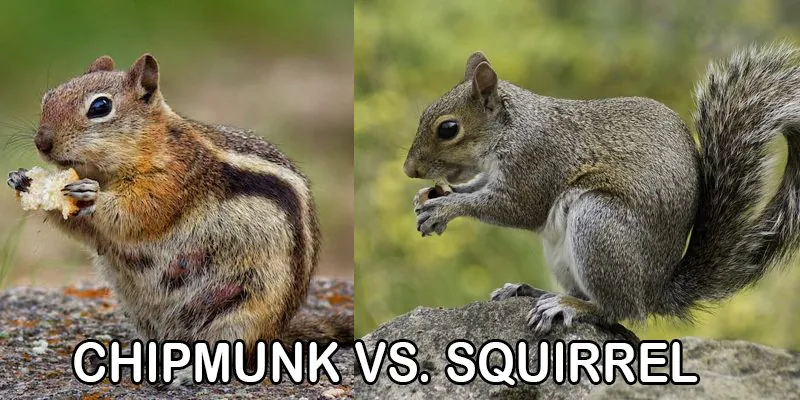
[table id=99 /]
15 Differences Between Chipmunks & Squirrels
Now that you have a quick overview of a chipmunk vs a squirrel, let’s take a deeper dive into each one of those factors to get a better idea of the similarities and differences between the two.
1. Taxonomy
Both chipmunks and squirrels are mammals in the order of Rodentia, belonging to the family Sciuridae, but beyond that, they differ in their taxonomic classifications.
Chipmunks belong to the genus Tamias, and squirrels belong to Sciurus. The scientific names of the various species denote the classification; for example, the Least Chipmunk is called a Tamias minimus, and the Eastern Gray Squirrel is called Sciurus carolinensis.
The squirrel and chipmunk do not have genetic compatibility and, therefore, cannot breed with each other.
2. Size
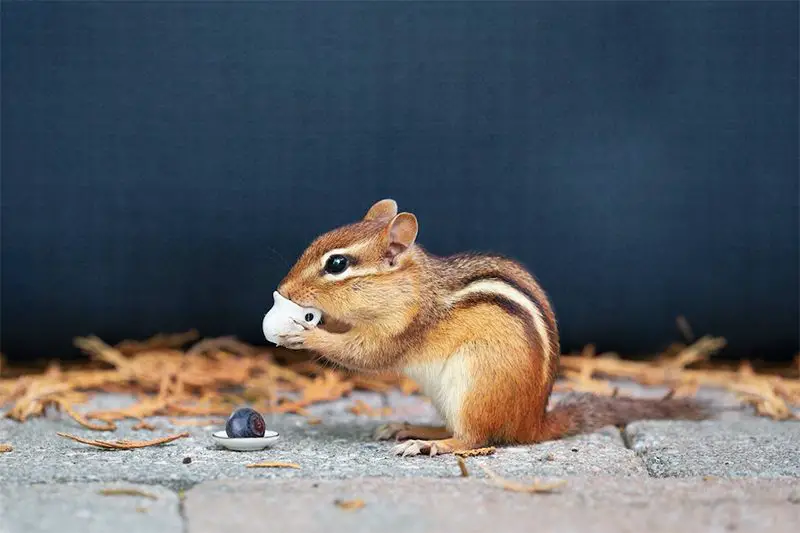
Squirrels are considerably bigger than chipmunks.
Squirrels range from 8 to 16 inches, with a tail length of up to 12 inches. They weigh anywhere from 7 to 24 ounces.
On the other hand, chipmunks have a body length of 5 to 6 inches long with a 3- to 4-inch long tail, typically weighing only 2 to 5 ounces.
3. Appearance: Colors & Patterns
Generally, squirrels and chipmunks look different because chipmunks have distinctive stripes down their backs.
Typically, a chipmunk has brown fur with black and white stripes extending from its head to its body. A squirrel has gray or reddish-brown fur with a white belly.
However, some ground squirrels are often confused with chipmunks because they have stripes or patterned fur. In this case, looking at other features, such as the tail and overall body size, is essential.
4. Ears
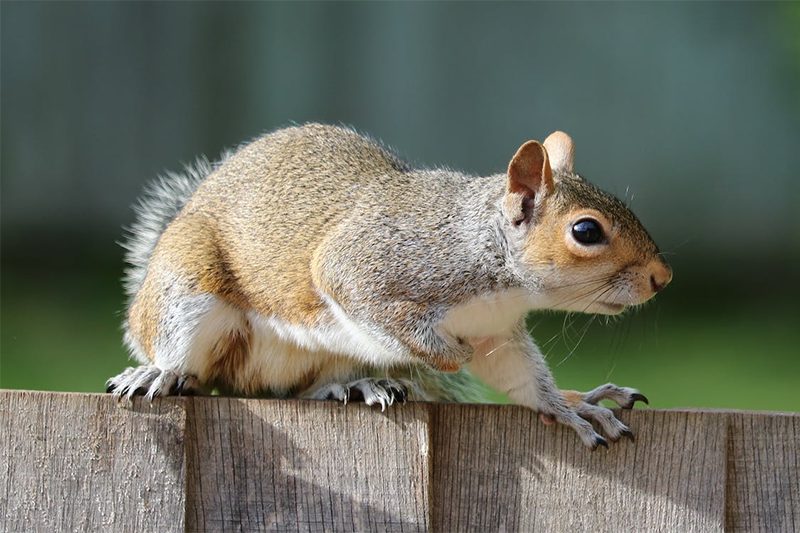
Chipmunks have tiny upright, rounded ears extending slightly upwards.
Squirrel ears are elongated, stretching much higher than the top of their heads. The shape of squirrels’ ears varies by species.
They typically are either pointed with long ½-inch tufts of hair or rounded and covered with the same hair as their bodies.
5. Tail
Chipmunks have fuzzy and bushy tails that are generally shorter than the length of their body. When running, chipmunks hold their tails up high.
Squirrels can have fuzzy and bushy tails as well. However, some species do not, such as the ground squirrel. Squirrel tails are nearly as long as their body length, and their bodies and tails stay streamlined and low to the ground when they run.
6. Locomotion
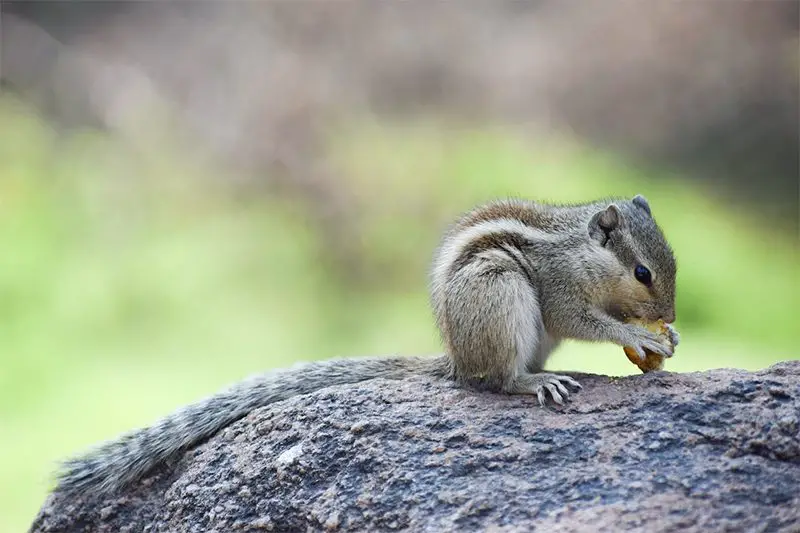
As mentioned above, chipmunks run with their tails high, while squirrels keep them streamlined along the ground.
Chipmunks can climb but spend most of their time along the ground or in burrows, and can run up to 21 mph and jump 3-foot distances.
Ground squirrels also spend much time on and under the ground like chipmunks. Other species, such as tree squirrels, climb trees and nest high.
Squirrels can run up to 20 mph, jump down from heights as high as 20 feet, and leap up to 10 times their body length.
7. Vocalizations
Chipmunks and squirrels vocalize to warn off predators or to seek out mates.
Chipmunks make various noises and calls such as “clucks”, trills, and high-pitched “chip-chips” that often sound like bird calls.
Squirrels make squeaks, snorts, screeches, barks, and grunts.
8. Diet
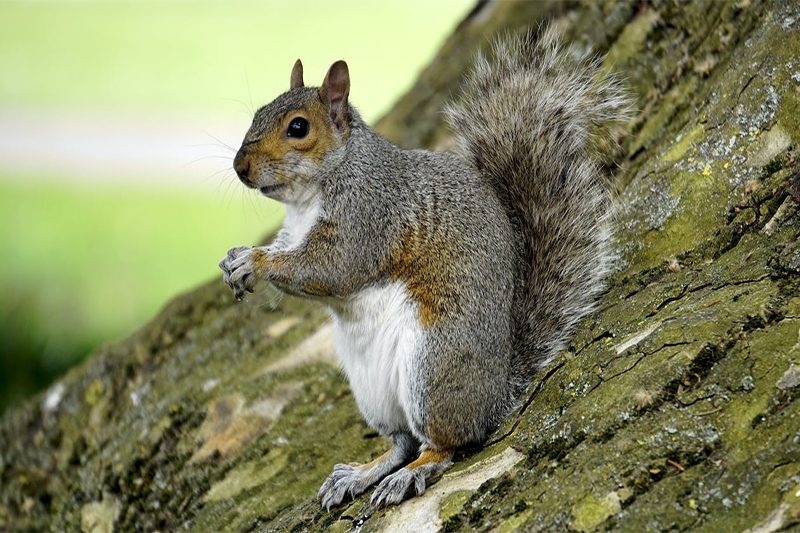
Chipmunks and squirrels are both omnivores and eat similar kinds of foods, however, chipmunks tend to opt for smaller vegetation and consume more insects than squirrels.
This table shows the typical diet of each animal:
[table id=101 /]
9. Food Storage
Squirrels and chipmunks store food away for the colder seasons when food is less plentiful.
The best way to identify the rodent is by determining where the food is stored, along with other defining characteristics mentioned in this article.
There are two types of caching: larder and scatter hoarding.
Larder hoarding consists of more significant and fewer caches. These are often found in burrows of chipmunks and ground squirrels. Some tree squirrels will larder hoard in a tree cavity or branch forks.
Scatter hoarding is when food is stored away in smaller amounts but in more areas. For example, many squirrels bury food about an inch under the surface in small caches of seeds, walnuts, and acorns.
10. Distribution
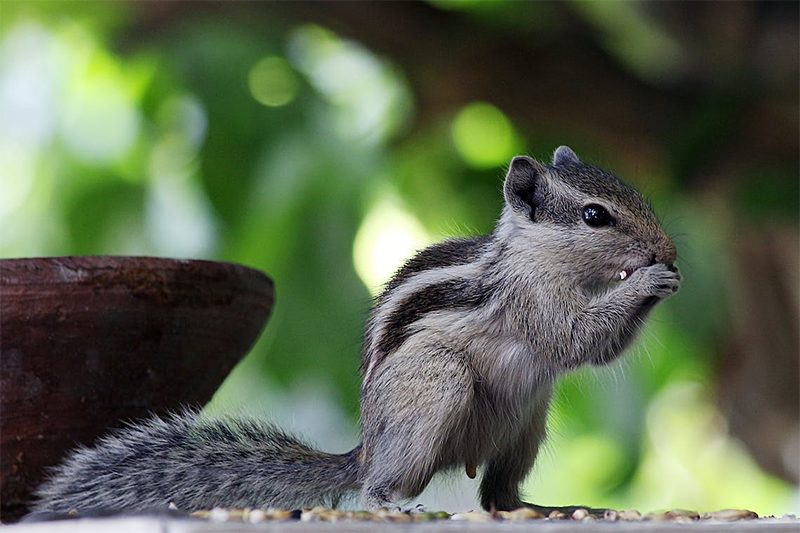
Squirrels are found all over the world, except Antarctica. They are native to North and South America, Eurasia, and Africa. Squirrels were introduced to Australia in the 19th century.
Chipmunks are native only to North America, except for the Siberian chipmunk found in Asia and Europe.
11. Habitat
Squirrels and chipmunks are found in some of the same habitats. However, chipmunks live in more versatile areas.
Squirrels inhabit mixed hardwood and coniferous forests, fields, hillsides, homeowner’s yards, cemeteries, and parks. Tree squirrels live in trees, and ground squirrels burrow in loose, moist soil.
Chipmunks can be found at sea level amongst giant boulders, cliffs, and various forest types. They inhabit deciduous and coniferous forests, deserts, scrublands, and homeowners’ properties.
They tend to opt for areas with abundant cover for burrowing and protection. Chipmunks can climb trees but live in burrows.
12. Hibernation

Ground squirrels hibernate during the winter in their burrows. However, tree squirrels do not.
Tree squirrels are less active in the winter, relying on shelter in nests, fat reserves, and cached food for survival.
Chipmunks are partial hibernators, meaning they enter a state of torpor for short periods in their burrows. A state of torpor is when body temperature and heart rate decrease to conserve energy. They arise from torpor every few days to eat and eliminate waste.
13. Nesting
Tree squirrels build nests, called dreys, from natural materials such as leaves, twigs, bark, and moss about 25 feet high in tree cavities or forks.
Ground squirrels and chipmunks will nest in their burrows, and Chipmunks may also build nests in log cavities or bushes.
14. Offspring
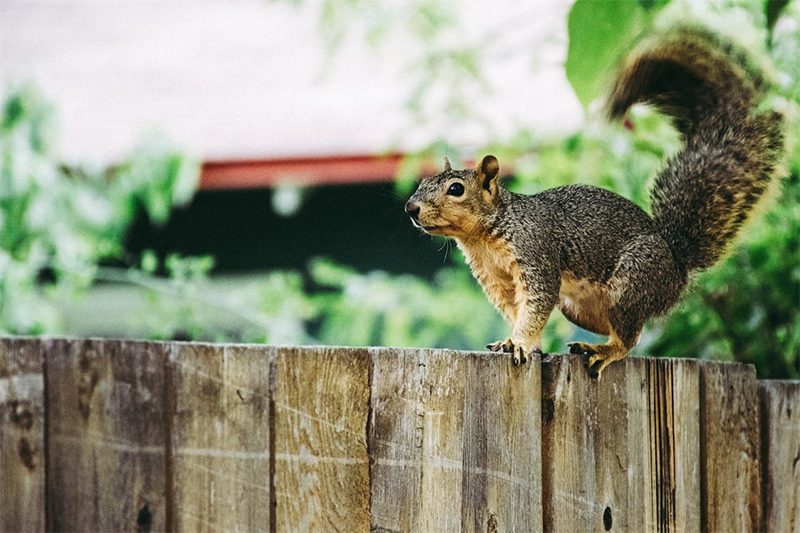
Both animals can have 1 or 2 litters each year. Chipmunks have slightly more offspring than squirrels.
Chipmunks typically have 2 to 6 babies after a gestation period of 31 days.
Squirrels have gestation periods of 29 to 46 days, depending upon the species, with litters of 1 to 4 babies on average.
15. Lifespan
The lifespan of a wild squirrel is longer than that of a chipmunk. On average, squirrels live 5 to 10 years, and chipmunks live 2 to 3 years.
Chipmunk vs. Squirrel Conclusion
Chipmunks and squirrels have many notable differences despite similar qualities.
The most striking ones are their differences in overall size, ear shape, and the way they hold their tails when they run. Squirrels are found worldwide, yet chipmunks are primarily in North America, with one exception.
They also have differences in their taxonomy, fur, and behavioral practices in food caching, nesting, and hibernation.

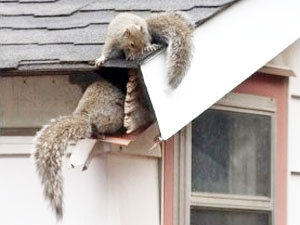
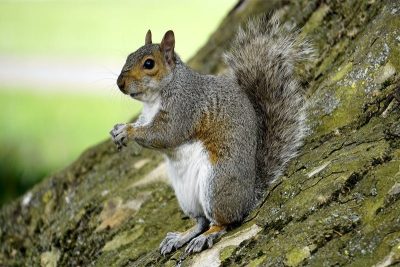

Appears you have a golden mounted ground squirrel or some AI image as your ‘chipmunk’. A true chipmunks eyes should extend to their face.